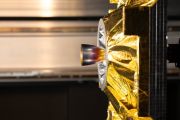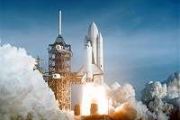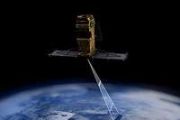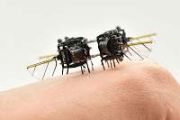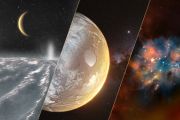
Copernical Team
Nigerian scientists await return of Egusi seeds sent to space
This request seems a bit unusual, so we need to confirm that you're human. Please press and hold the button until it turns completely green. Thank you for your cooperation!
Press and hold the button
If you believe this is an error, please contact our support team.
185.132.36.159 : f87edf80-cc83-467d-a4fa-d4fabe8a
NASA Acting Chief Duffy issues directive to speed up moon reactor plans
This request seems a bit unusual, so we need to confirm that you're human. Please press and hold the button until it turns completely green. Thank you for your cooperation!
Press and hold the button
If you believe this is an error, please contact our support team.
185.132.36.159 : aedfa5f7-db65-4c69-90ab-adaf339a
NASA's Lunar Trailblazer moon mission ends
This request seems a bit unusual, so we need to confirm that you're human. Please press and hold the button until it turns completely green. Thank you for your cooperation!
Press and hold the button
If you believe this is an error, please contact our support team.
185.132.36.159 : f480946a-9b4d-4108-aadb-04d564bc
NASA's Black Marble: Stories from the night sky
This request seems a bit unusual, so we need to confirm that you're human. Please press and hold the button until it turns completely green. Thank you for your cooperation!
Press and hold the button
If you believe this is an error, please contact our support team.
185.132.36.159 : 087b2a73-92b4-425e-86b1-77ca0987
Distributed Spacecraft Autonomy could enable future satellite swarms to complete science goals with little human help
This request seems a bit unusual, so we need to confirm that you're human. Please press and hold the button until it turns completely green. Thank you for your cooperation!
Press and hold the button
If you believe this is an error, please contact our support team.
185.132.36.159 : 93f05c1a-a3ff-478d-a075-6fc2f800
NASA's SpaceX Crew-10 looks back at science mission
This request seems a bit unusual, so we need to confirm that you're human. Please press and hold the button until it turns completely green. Thank you for your cooperation!
Press and hold the button
If you believe this is an error, please contact our support team.
185.132.36.159 : 5dff2d05-6fe7-4d24-a1e4-b5f10f0d
Six of Ingenuity's successors could be exploring Mars in 4 years
This request seems a bit unusual, so we need to confirm that you're human. Please press and hold the button until it turns completely green. Thank you for your cooperation!
Press and hold the button
If you believe this is an error, please contact our support team.
185.132.36.159 : 9a50d5a4-0b0a-47ec-9858-698cc7f2
Stuck astronaut Butch Wilmore retires from NASA less than 5 months after extended spaceflight
This request seems a bit unusual, so we need to confirm that you're human. Please press and hold the button until it turns completely green. Thank you for your cooperation!
Press and hold the button
If you believe this is an error, please contact our support team.
185.132.36.159 : c259279a-d603-4af5-a2c2-44d0c961
First asteroid sightings push Hera's camera to the limit
This request seems a bit unusual, so we need to confirm that you're human. Please press and hold the button until it turns completely green. Thank you for your cooperation!
Press and hold the button
If you believe this is an error, please contact our support team.
185.132.36.159 : 0435fcbf-74ca-4125-b62e-6a244b4f
An interstellar mission to a black hole? Astrophysicist thinks it's possible
This request seems a bit unusual, so we need to confirm that you're human. Please press and hold the button until it turns completely green. Thank you for your cooperation!
Press and hold the button
If you believe this is an error, please contact our support team.
185.132.36.159 : 44a398b4-9a61-4b69-b52c-02cfecc0













